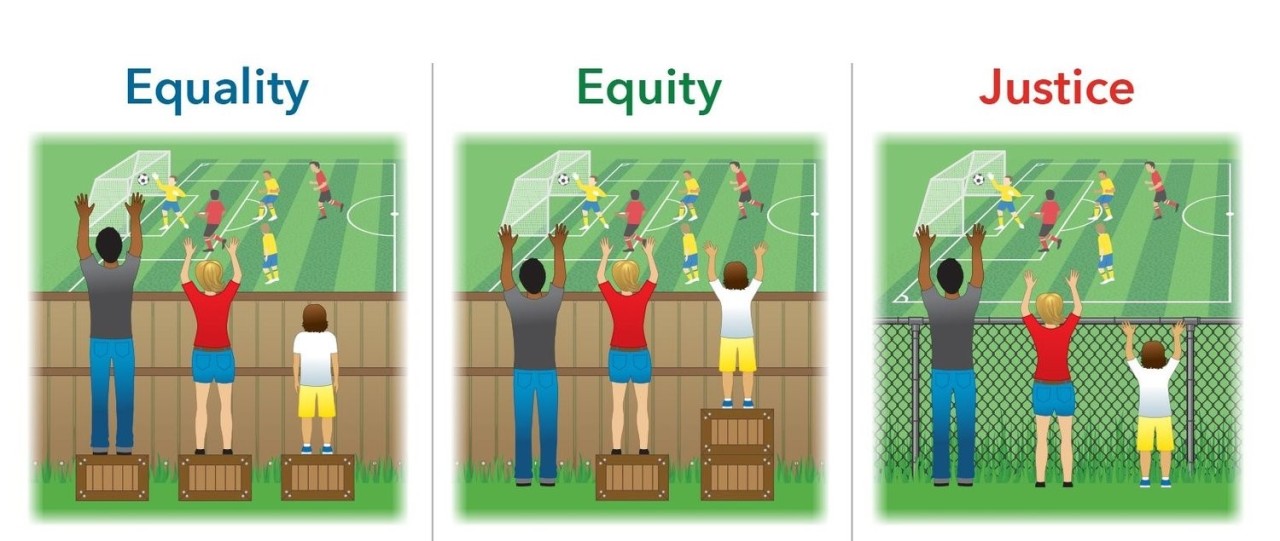
The persistent issue of inequity in STEM – how can we accelerate change?
Time has flown since I joined Wellcome as Head of Education & Learning earlier this year! It has been a privilege to come into an amazing team of passionate, dedicated professionals and an organization with the will and resources to tackle big challenges, both in the UK and globally. As millions of young people head back to school this week, I am pondering how we can truly prepare all of them with the skills they will need for the world they are heading into.
Our team is currently two-thirds of the way through a five-year strategy that focuses on supporting educators as the crucial lever to bring about systemic change. Our work strives to improve primary science teaching, supports teachers’ professional development, and also supports youth workers to provide more opportunities for informal science learning in their communities. This is all underpinned by our research and policy work. We’re excited about what we’ve achieved so far and energized about where we are headed.
However, we recognize that the road to improve science education is long and the learning gap between richer and poorer students has not changed in decades. Almost every country is grappling with this issue and to me, equitable access to science, technology, engineering and maths (STEM) sits at the intersection of education, economics and social justice. In an increasingly STEM-dependent world, it’s essential that all young people see science as something they can engage with both in and out of school. They need to have opportunities to be STEM-literate and proficient; we all need this vital tool to make informed choices as citizens and participate in the modern global economy. But too often, large groups of people are left without these tools with lasting consequences for themselves, their communities and society.
So it’s encouraging that this year’s A-Level results in the UK show increased entries into biology, chemistry, physics and computing. But let’s remember that 51% of students do not go on to university and post-16 routes are increasingly segregated by socio-economic status. Disadvantaged pupils are also almost twice as likely to fail GCSE maths as their wealthier classmates and we know maths is essential for engaging with many STEM fields. Too many young people are struggling with many types of disadvantage that affects their learning and life outcomes: where you live, how much money your family has, or the colour of your skin are still major barriers that prevent many from realizing their potential.
So what do we need to do next?
As we look ahead to our next strategic plan, tackling the impacts of deprivation and addressing representation are key priorities. We’re carefully considering how we can better support equitable access to science learning and participation and reduce the gap in outcomes for different populations. So we’re grappling with some big questions:
- As a large independent charity with a vested interest in science education and learning, how can we use our autonomy to help with some of today’s problems while setting out ambitious goals for the better future we all want?
- Should education at Wellcome stay UK-focused or expand to act more globally reflecting the global nature of Wellcome's work?
- How can I use my role to have some new conversations about how we can act more urgently and innovatively to tackle systemic inequities in STEM education access and outcomes?
For example, given that social policy and education policy are intimately related, should we engage with the bigger societal context and take a more holistic systems approach to ensuring better learning and career outcomes for young people? Can this system be a more coherent learner-centered STEM ecosystem as some are trying? Or does it have to be even more comprehensive as we know that wide gaps are already in place by the time children enter primary school (graphic above from the Education Policy Institute's 2019 Annual Report of Education in England)? How do we take an "all-hands-on-deck" approach and make full use of community assets and partners?
We don’t have all the answers, but we know that to be responsive to the most pressing needs and to truly reflect the community, we need to hear from a diverse range of voices. There are many dedicated individuals and groups already working on these issues: we want to better understand where it’s best for us to support and where we should lead. The many stakeholder conversations we have planned over the coming months will help us find this sweet spot. In the meantime, we’d welcome your thoughts and hope you will engage with us in the conversation.

Risk Management Executive with 20+ years of risk management and insurance experience
4yHere's some exciting news at the university level: https://www.spelman.edu/about-us/news-and-events/news-releases/2019/09/03/spelman-receives-funding-to-establish-a-center-of-excellence-for-minority-women-in-stem
Directora de Arquitectura de Experiencias en Maloka
4yDear Anita, as you say, the situation is similar in different countries, here in Colombia we are facing the same challenge and its complexity calls for an ecosystem approach, the school system can't do it alone. Happy to learn from your next steps, it would be great if international cooperation doors are open.
Writer, editor, and communications trainer for nonprofits and small businesses
4yA thoughtful piece. I hope you'll keep us posted on progress.
Founder and CEO, TIES
4yLooking forward to being with you at STEM LEARNING ECOSYSTEMS COMMUNITY OF PRACTICE gathering in Cleveland!!